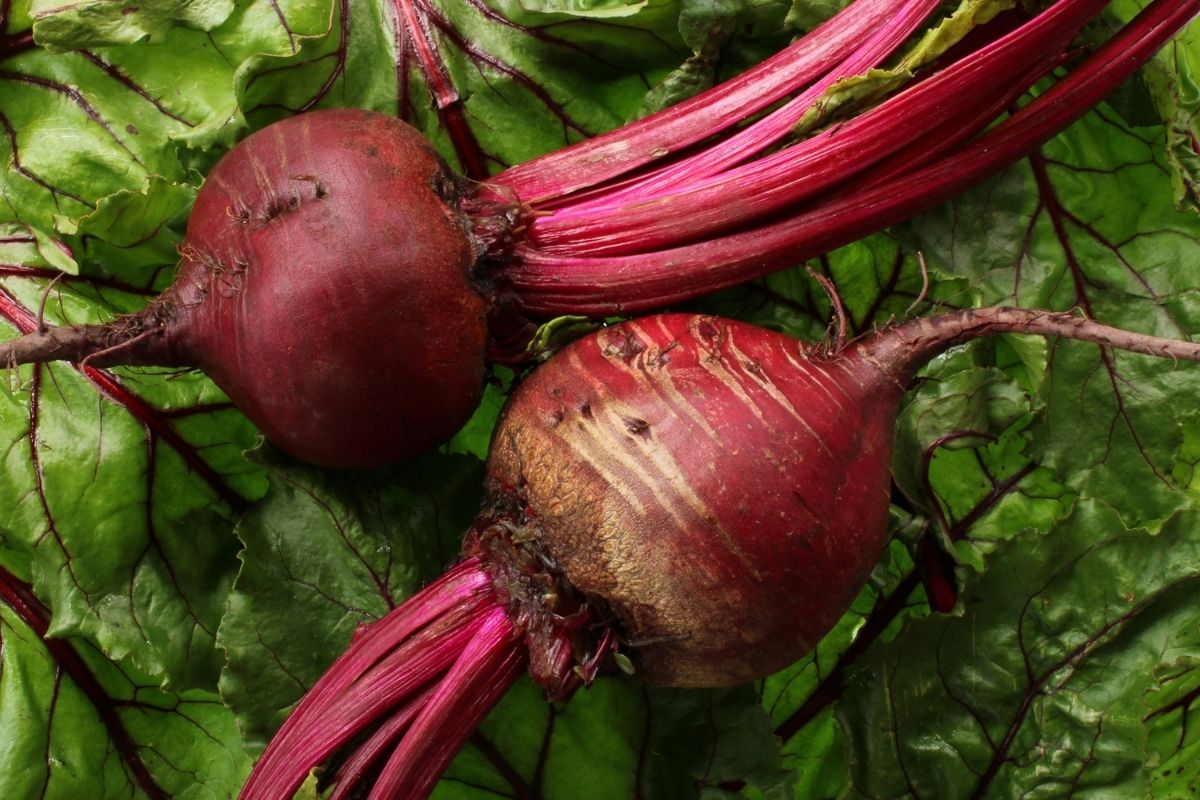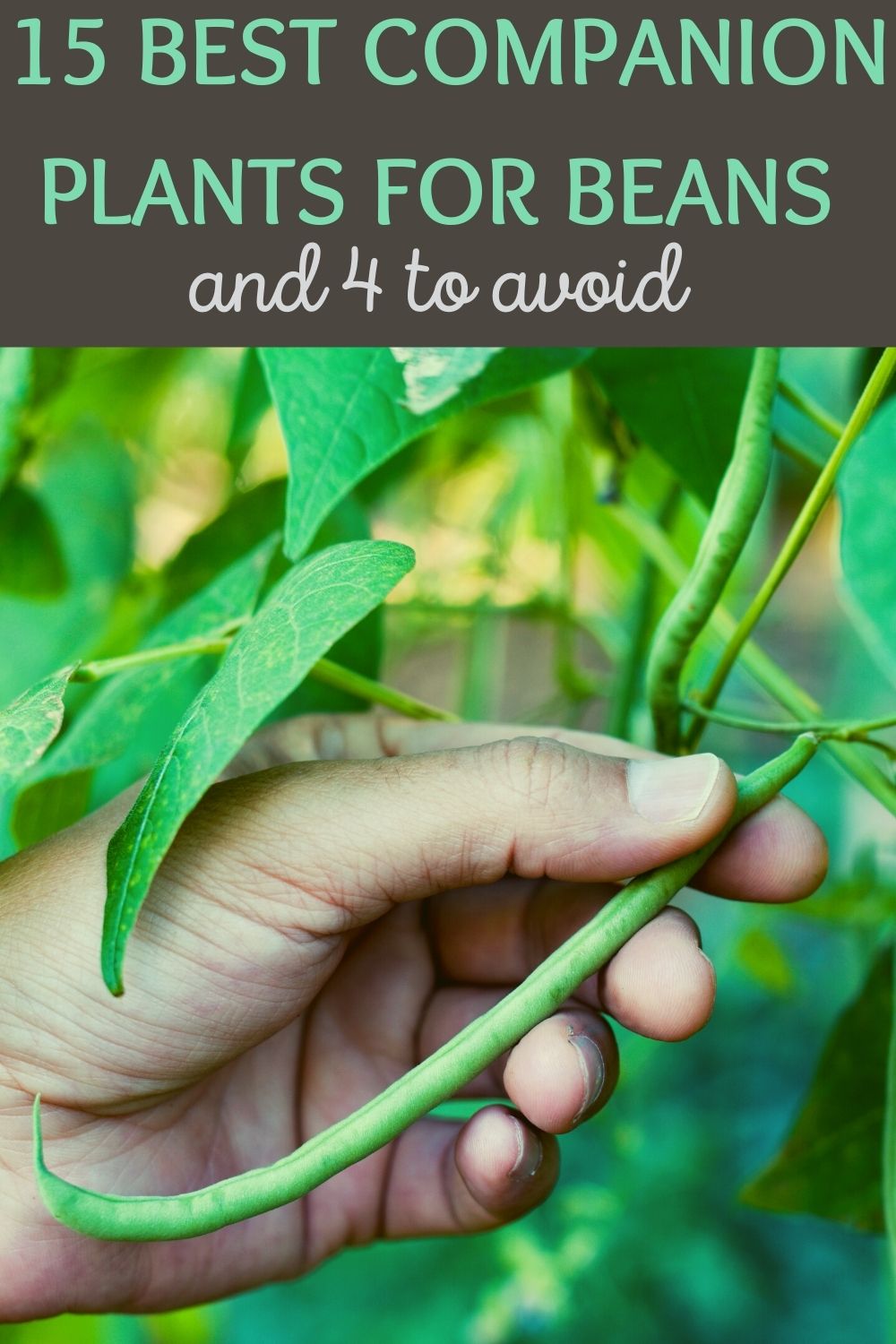Beans are one of my favorite garden vegetables. They are so rewarding and easy to grow, and I appreciate the rhythmic work of picking and snapping them (though by summer’s end I’m tired of the work!). In winter, I can pull out a bag of frozen beans or a jar of dilly beans and enjoy these summer vegetables all over again.
But every year, my garden is plagued by Mexican bean beetles. I plant succession crops of beans, but I’ve also begun exploring growing beans with plants that repel these nasty little beetles. While some companion plants for beans do just that, others help the beans in different ways or benefit from growing near the beans. For example, being legumes, beans fix nitrogen in the soil, which can help plants that require large amounts of that important nutrient.

What is companion planting?
Companion planting, also called polyculture or intercropping, is the practice of growing different plants in the same space based on their compatibility and the benefits they offer to each other.
Best Companion Plants for Beans
Discover plants that can improve your bean harvest as well as those that might grow better when planted near beans. A common green bean companion planting involves pole beans, corn, and squash, a combination traditionally called the three sisters.
1. Catnip
Catnip deters flea beetles, which feast on not only beans but many other vegetable garden plants as well.
2. Corn
Beans fix nitrogen in the soil for corn to absorb (especially when corn follows beans in succession), and corn stalks provide a natural trellis for pole beans to climb.
3. Cucumbers
Cucumbers benefit from the nitrogen provided by bean plants and, in turn, encourage strong growth in the beans.
4. Eggplant
Like cucumbers, eggplants may also improve bean growth as well as feed on the nitrogen that beans fix in the soil.
5. Lettuce
Because lettuce grows best in cool weather, planting it in the shade of pole beans and keeping it well-watered can extend the growing season.
6. Kale
Kale, like lettuce, may appreciate growing under pole beans and take longer to bolt in the cool shade.
7. Marigolds
With their strong but pleasant scent, marigolds repel the dreaded Mexican bean beetles, as well as other common garden pests. Additionally, African and French marigolds produce a natural chemical that deters nematodes.
8. Nasturtium
Nasturtiums also deter Mexican bean beetles and other insect pests. Plus, these vining flowers can act as a living mulch under pole beans, protecting the bare soil and improving moisture retention. Check out our guide to planting and growing nasturtiums.
9. Petunias
Are you convinced yet to intersperse your bean plants with colorful flowers? Petunias, too, help keep Mexican bean beetles away! Just make sure to leave them enough space so that they don’t get shaded out by bush beans.
Love petunias? Here are some ideas for landscaping with petunias.
10. Potatoes
Potatoes and beans are mutually beneficial, with potatoes repelling Mexican bean beetles and beans discouraging Colorado potato beetles.
11. Radishes
Radishes encourage healthy bean growth and appreciate the nitrogen boost from beans. They are also a quick crop to grow before bush beans fully mature or to plant in the ample space under bean poles.
Here are the best companion plants for radishes.
12. Rosemary
Another fragrant pest repellent, rosemary helps discourage Mexican bean beetles and other insect pests. Keep in mind that rosemary is a tender perennial, so you may want to place potted rosemary near your beans rather than plant it in the ground.
13. Savory
Summer savory just might be the best bean companion plant. This annual herb repels Mexican bean beetles, with the added benefit of improving growth and enhancing the flavor of beans.
14. Spinach
Like lettuce and kale, spinach appreciates growing in the cool shade cast by pole beans. In return, spinach provides ground cover.
15. Squash
Squash benefits from the nitrogen boost beans provide and shade out weeds around the base of pole beans.
Worst Companion Plants for Beans
Some plants do not enjoy the company of beans, and some can stunt beans’ growth. Here are a few that should be avoided:
1. Beets

Interestingly, beets affect pole and bush beans differently. Beets and pole beans impede each other’s growth, but bush beans get along okay with beets.
2. Onions

Onions and other members of the allium family produce a natural chemical that kills beneficial bacteria on bean roots, both inhibiting bean plant growth and preventing beans from fixing nitrogen in the soil. However, garlic deters Mexican bean beetles, so it may be worth growing in the next bed over.
3. Peppers

While peppers and beans both benefit the soil, the aggressive growth of bean plants can choke out pepper plants. As a result, experts disagree on whether these two plants can happily coexist.
4. Sunflowers

Some gardeners add sunflowers as a cheery fourth “sister” to their three sisters garden, as, like corn, sunflowers offer natural support to pole beans. However, they also, unfortunately, exude a natural chemical that impedes the growth of bean plants, making them not-so-great companions.
I can’t wait to incorporate some new companion plants with my beloved bush beans this year! Summer savory, nasturtiums, and marigolds are at the top of my list for their Mexican bean beetle-repelling qualities, but there are so many other great options to try as well. What combinations might you consider?



















Companion Planting Guide (Including 7 Benefits Of Polyculture)
Wednesday 1st of June 2022
[…] Companion plants for beans […]